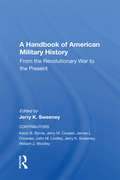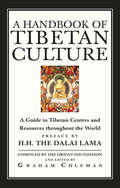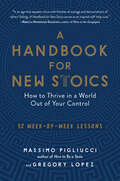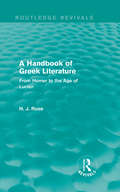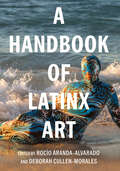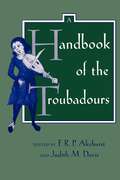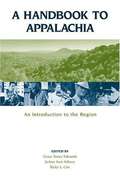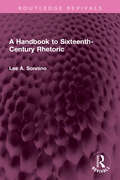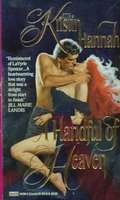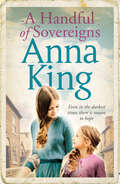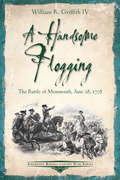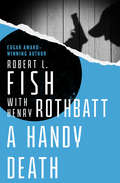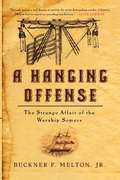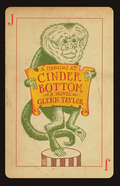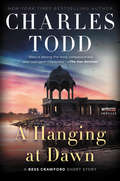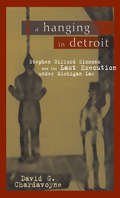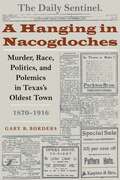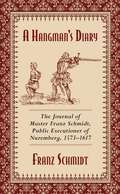- Table View
- List View
A Handbook Of American Military History: From The Revolutionary War To The Present
by Jerry SweeneyThis unique reference work covers the military history of the United States from the Revolution to the Gulf War. The Handbook of American Military History is comprehensive, easy to use, and supplies essential information on the social, technological, political, tactical, and strategic developments that have affected the evolution of the U.S.
A Handbook Of Tibetan Culture: A Guide To Tibetan Centres And Resources Throughout The World
by Graham ColemanA Handbook for New Stoics: How To Thrive In A World Out Of Your Control--52 Week-by-week Lessons
by Massimo Pigliucci Gregory LopezA pragmatic philosophy more popular than ever—here are 52 ancient lessons to help you overcome adversity and find tranquility in the modern world Stress often comes from situations that are beyond our control—such as preparing for a meeting, waiting for test results, or arguing with a loved one. But we can control our response to these everyday tensions—through the wisdom and practice of Stoicism. Stoicism is an ancient pragmatic philosophy that teaches us to step back, gain perspective, and act with intention. In A Handbook for New Stoics, renowned philosopher Massimo Pigliucci and seasoned practitioner Gregory Lopez provide 52 week-by-week lessons to help us apply timeless Stoic teachings to modern life. Whether you’re already familiar with Seneca and Marcus Aurelius, or you’re entirely new to Stoicism, this handbook will help you embrace challenges, thrive under pressure, and discover the good life!
A Handbook of Gods and Goddesses of the Ancient Near East: Three Thousand Deities of Anatolia, Syria, Israel, Sumer, Babylonia, Assyria, and Elam
by Douglas R. Frayne Johanna H. StuckeyFrom the tragic young Adonis to Zašhapuna, first among goddesses, this handbook provides the most complete information available on deities from the cultures and religions of the ancient Near East, including Anatolia, Syria, Israel, Sumer, Babylonia, Assyria, and Elam. The result of nearly fifteen years of research, this handbook is more expansive and covers a wider range of sources and civilizations than any previous reference works on the topic. Arranged alphabetically, the entries range from multiple pages of information to a single line—sometimes all that we know about a given deity. Where possible, each record discusses the deity’s symbolism and imagery, connecting it to the myths, rituals, and festivals described in ancient sources. Many of the entries are accompanied by illustrations that aid in understanding the iconography, and they all include references to texts in which the god or goddess is mentioned.Appropriate for both trained scholars and nonacademic readers, this book collects centuries of Near Eastern mythology into one volume. It will be an especially valuable resource for anyone interested in Assyriology, ancient religion, and the ancient Near East.
A Handbook of Gods and Goddesses of the Ancient Near East: Three Thousand Deities of Anatolia, Syria, Israel, Sumer, Babylonia, Assyria, and Elam
by Douglas R. Frayne Johanna H. StuckeyFrom the tragic young Adonis to Zašhapuna, first among goddesses, this handbook provides the most complete information available on deities from the cultures and religions of the ancient Near East, including Anatolia, Syria, Israel, Sumer, Babylonia, Assyria, and Elam. The result of nearly fifteen years of research, this handbook is more expansive and covers a wider range of sources and civilizations than any previous reference works on the topic. Arranged alphabetically, the entries range from multiple pages of information to a single line—sometimes all that we know about a given deity. Where possible, each record discusses the deity’s symbolism and imagery, connecting it to the myths, rituals, and festivals described in ancient sources. Many of the entries are accompanied by illustrations that aid in understanding the iconography, and they all include references to texts in which the god or goddess is mentioned.Appropriate for both trained scholars and nonacademic readers, this book collects centuries of Near Eastern mythology into one volume. It will be an especially valuable resource for anyone interested in Assyriology, ancient religion, and the ancient Near East.
A Handbook of Greek Literature: From Homer to the Age of Lucian (Routledge Revivals)
by H.J. RoseFirst published in 1934, this book covers a broad array of ancient Greek literature, taking into account the most acknowledged of the Greek authors as well as those less well known. H. J. Rose presents the latest findings of the time in terms of research into Greek literature and covers subjects from Homer, Comedy and Poetry, to Philosophy, Science, and the Empire.
A Handbook of Greek Mythology
by H. J. RoseIn this new and substantially revised edition of H. J. Rose's classic survey and analysis of the evolution and tradition of Greek myth, Robin Hard adds various features which bring the work up-to-date with contemporary scholarship and address the needs of students.* a new preface analysing and contextualising H. J. Rose's attitude to myth* a new chapter devoted to the epic and other poetic sources of the myths, narrative prose mythography and the various forms of rationalisation* a new chapter examining the relationship between the different myths of Gods and heroes, with genealogical tables. Robin Hard shows how the myths of individual families and distinct locations hold together to form a coherent pseudo-historical pattern* extensively revises and simplifies notes* a new annotated bibliography.A Handbook of Greek Mythology presents a invaluable and user-friendly guide to the myths and legends of ancient Greece - their genesis, sources, development and significance.
A Handbook of Latinx Art (Documents of Twentieth-Century Art)
by RocíO Aranda-Alvarado and Deborah Cullen-MoralesA curated selection of key texts and artists’ voices exploring US Latinx art and art history from the 1960s to the present. A Handbook of Latinx Art is the first anthology to explore the rich, deep, and often overlooked contributions that Latinx artists have made to art in the United States. Drawn from wide-ranging sources, this volume includes texts by artists, critics, and scholars from the 1960s to the present that reflect the diversity of the Latinx experience across the nation, from the West Coast and the Mexican border to New York, Miami, and the Midwest. The anthology features essential writings by Mexican American, Puerto Rican, Cuban American, Dominican American, and Central American artists to highlight how visionaries of diverse immigrant groups negotiate issues of participation and belonging, material, style, and community in their own voices. These intersectional essays cut across region, gender, race, and class to lay out a complex emerging field that reckons with different histories, geographies, and political engagements and, ultimately, underscores the importance of Latinx artists to the history of American art.
A Handbook of the Troubadours (Center for Medieval and Renaissance Studies, UCLA #26)
by F. R. Akehurst Judith M. DavisThis book is a reference volume and a digest of more than a century of scholarly work on troubadour poetry. Written by leading scholars, it summarizes the current consensus on the various facets of troubadour studies.Standing at the beginning of the history of modern European verse, the troubadours were the prime poets and composers of the twelfth and thirteenth centuries in the South of France. No study of medieval literature is complete without an examination of the courtly love which is celebrated in the elaborately rhymed stanzas of troubadour verse, creations whose words and melodies were imitated by poets and musicians all over medieval Europe.The words of about 2,500 troubadour songs have survived, along with 250 melodies, and all have come under intense scholarly scrutiny. This Handbook brings together the fruits of this scrutiny, giving teachers and students an overview of the fundamental issues in troubadour scholarship. All quotations are given in the original Old Occitan and in English. The editors provide a list of troubadour editions and an index, and each chapter includes a list of additional readings.
A Handbook to Appalachia: An Introduction to the Region
by Grace Tomey Edwards Noann Aust Asbury Ricky L. CoxReference work introducing various aspects of the Appalachian region including geography, history, the arts, etc.
A Handbook to Sixteenth-Century Rhetoric (Routledge Revivals)
by Lee A. SonninoFirst published in 1968, A Handbook to Sixteenth-Century Rhetoric is designed primarily to assist the student of renaissance literature in the science of rhetoric. It gathers together the information provided by the various different authorities who contributed to the education of the renaissance author, particularly the writer in English. These authorities include key classical rhetoricians he would probably have read, well-known and important renaissance rhetoricians, and the writers of vernacular treatises and of major school textbooks. The information is arranged in a schematic and tabular form, so that enquiry can start from the object, the particular rhetorical form as it appears in a given literary text. The core of the book is the central section on elocutio, the art of using the devices of rhetorical ornament.
A Handful of Heaven
by Kristin HannahYUKON TERRITORY WAS A GOLD MINER'S HEAVEN, AND DEVON O'SHEA HAD COME TO CLAIM HER SHARE.... But instead of a thriving store in a boom town, Devon O'Shea discovered she was part owner of a filthy, disorganized tent-% stuck in the middle of a godforsaken frozen Moose pasture with a bunch of motley gold diggers and a mountainous slap | of animosity for a partner: Stone Man MacKenna: Gathering mop, Pail, and sheer determination, Devon vowed to make this post the best in Yukon Territory: Stone Man didn't scare her-not his bear voice, giant size, or eagle eyes... or threats of the bug-infested tent and bed they had to share. But his kiss-a gruff attempt to convince her that the Yukon was no place for a lady-left her feeling, for the first time in her life, feminine and alive. Here in the green wilderness of the North, dreamers were, panning for bits of heaven. Here, perhaps Devon might find a handful of her very own after all...
A Handful of Heroes, Rorke's Drift: Facts, Myths and Legends
by Katie StosselA compelling account of the courageous standoff between 150 British troops and more than 3,000 Zulu warriors during the Anglo-Zulu War. Thanks to newly discovered letters and documents, A Handful of Heroes, Rorke&’s Drift updates the history of the Defense of Rorke&’s Drift, which will forever be one of the most celebrated British feats of arms. Remarkably after such prolonged historical scrutiny, the author&’s research proves that there is yet more to discover about this famous incident of the Zulu War in 1879, and her superbly researched book reveals a number of myths that have distorted what happened during the gallant defense of the small Mission Station. This fascinating and highly readable account goes on to examine in detail the famous Chard Report, which has long been relied on by historians and authors. Doubts emerge as to its accuracy, and evidence is provided which suggests the report&’s author was coerced by a senior officer in order to protect the latter&’s reputation. Likewise the letters of August Hammar, a young Swedish visitor to the Mission, put Reverend Otto Witt&’s false account into perspective. These and other revelations make A Handful of Heroes, Rorke&’s Drift a fresh and important addition to the bibliography of this legendary Zulu War engagement. &“Though the book reviewed here should not be your first dip into the history of the Zulu War, it is an essential one. It provides readers with a wider understanding of the events and their aftermath . . . The author does the job here with style and grace.&” —War History Online
A Handful of Sovereigns
by Anna KingThree children must fend for themselves in Victorian London. But there might be a way out . . . A classic family saga from the author of Palace of Tears. When fifteen-year-old Maggie, her sister Liz and young brother Charlie find themselves tragically orphaned, they know their young lives can never be the same again. And when Liz is taken ill, Maggie has to tend to her, and loses what little work she had. In desperation, she ventures onto the streets, risking her safety and her innocence. A mysterious stranger appears to offer hope, but does he have only her best interests at heart? Will tragedy strike again or can Maggie save the family from poverty, and find the happiness she truly deserves? Set in London&’s Bethnal Green shortly after the Ripper murders, A Handful of Sovereigns is perfect for fans of Jennie Felton, Maggie Ford or Dilly Court.
A Handsome Flogging: The Battle of Monmouth, June 28, 1778 (Emerging Revolutionary War Series)
by William R. Griffith IVPlace yourself in the boots of the Continental Army and the British forces as they march towards a pivotal Revolutionary War battle.June 1778 was a tumultuous month in the annals of American military history. Somehow, General George Washington and the Continental Army were able to survive a string of defeats around Philadelphia in 1777 and a desperate winter at Valley Forge. As winter turned to spring, and spring turned to summer, the army—newly trained by Baron von Steuben and in high spirits thanks to France’s intervention into the conflict—marched out of Valley Forge in pursuit of Henry Clinton’s British Army making its way across New Jersey for New York City.What would happen next was not an easy decision for Washington to make. Should he attack the British column? And if so, how? “People expect something from us and our strength demands it,” Gen. Nathanael Greene pressed his chieftain. Against the advice of many of his subordinates, Washington ordered the army to aggressively pursue the British and not allow the enemy to escape to New York City without a fight.On June 28, 1778, the vanguard of the Continental Army under Maj. Gen. Charles Lee engaged Clinton’s rearguard near the small village of Monmouth Court House. Lee’s over-cautiousness prevailed and the Americans were ordered to hasty retreat. Only the arrival of Washington and the main body of the army saved the Americans from disaster. By the end of the day, they held the field as the British continued their march to Sandy Hook and New York City.In A Handsome Flogging: The Battle of Monmouth, June 28, 1778, historian William Griffith retells the story of what many historians have dubbed the “battle that made the American army,” and takes you along the routes trekked by both armies on their marches toward destiny. Follow in the footsteps of heroes (and a heroine) who, on a hot summer day, met in desperate struggle in the woods and farm fields around Monmouth Court House.
A Handy Death
by Robert L. Fish Henry RothbattA lawyer agrees to defend an ex-baseball prospect accused of murder In 1964, nineteen-year-old Billy Dupaul was on his way to stardom. A modest farm boy with a lightning fastball, he had just signed a record contract with the New York Mets when a single gunshot changed his life forever. Dupaul went down on an attempted murder rap, and the Mets washed their hands of him. Eight years later, the man he was said to have shot drops dead when a shard of bullet works its way into his brain. After eight summers in Attica, Billy is about to be tried for murder. After throwing him to the wolves in 1964, the vice president of the Mets shows surprising interest in the case and hires Hank Ross, one of the toughest defense attorneys in Manhattan, to save the boy from the chair. It's an impossible assignment, and Ross will find the case has more bite than any big-league curve.
A Hanging Offense
by Buckner MeltonMutiny on the Bounty is one of history's greatest naval stories -- yet few know the similar tale from America's own fledgling navy in the dying days of the Age of Sail, a tale of mutiny and death at sea on an American warship. In 1842, the brig-of-war Somers set out on a training cruise for apprentice seamen, commanded by rising star Alexander Mackenzie. Somers was crammed with teenagers. Among them was Acting Midshipman Philip Spencer, a disturbed youth and a son of the U.S. Secretary of War. Buying other crew members' loyalty with pilfered tobacco and alcohol, Spencer dreamed up a scheme to kill the officers and turn Somers into a pirate ship. In the isolated world of a warship, a single man can threaten the crew's discipline and the captain's authority. But one of Spencer's followers warned Mackenzie, who arrested the midshipman and chained him and other ringleaders to the quarterdeck. Fearing efforts to rescue the prisoners, officers had to stay awake in round-the-clock watches. Steering desperately for land, sleep-deprived and armed to the teeth, battling efforts to liberate Spencer, Somers's captain and officers finally faced a fateful choice: somehow keep control of the vessel until reaching port -- still hundreds of miles away -- or hang the midshipman and his two leading henchmen before the boys could take over the ship. The results shook the nation. A naval investigation of the affair turned into a court-martial and a state trial and led to the founding of the Naval Academy to provide better officers for the still-young republic. Mackenzie's controversial decision may have inspired Herman Melville's great work Billy Budd. The story of Somers raises timeless questions still disturbing in twenty-first-century America: the relationship between civil and military law, the hazy line between peace and war, the battle between individual rights and national security, and the ultimate challenge of command at sea.
A Hanging at Cinder Bottom: A Novel
by Glenn TaylorStylish historical fiction in the tradition of True Grit and Carter Beats the Devil, A Hanging at Cinder Bottom is an epic novel of exile and retribution, a heist tale and a love story both. The year is 1910. Halley’s Comet has just signaled the end of the world, and Jack Johnson has knocked out the “Great White Hope,” Jim Jeffries. Keystone, West Virginia, is the region’s biggest boomtown, and on a rainy Sunday morning in August, its townspeople are gathered in a red-light district known as Cinder Bottom to witness the first public hanging in over a decade. Abe Baach and Goldie Toothman are at the gallows, awaiting their execution. He’s Keystone’s most famous poker player; she’s the madam of its most infamous brothel. Abe split town seven years prior under suspicion of armed robbery and murder, and has been playing cards up and down the coast, hustling under a variety of pseudonyms, ever since. But when he returns to Keystone to reunite with Goldie and to set the past right, he finds a brother dead and his father’s saloon in shambles—and suspects the same men might be responsible for both. Only then, in facing his family’s past, does the real swindle begin. Glenn Taylor, a finalist for the National Book Critics Circle Award, has a unique voice that breathes life into history and a prose style that snaps with lyricism and comedy.
A Hanging at Dawn: A Bess Crawford Short Story (Bess Crawford Mysteries)
by Charles Todd“Bess is among the most compassionate and intelligent characters.” –The Sun-Sentinel From the New York Times bestselling author of the Bess Crawford mystery series, a short story that unravels dark secrets from her close friend Simon Brandon’s past. Years before the Great War summoned Bess Crawford to serve as a battlefield nurse, the indomitable heroine spent her childhood in India under the watchful eye of her friend and confidant, the young soldier Simon Brandon. The two formed an inseparable bond on the dangerous Northwest Frontier where her father’s Regiment held the Khyber Pass against all intruders. It was Simon who taught Bess to ride and shoot, escorted her to the bazaars and the Maharani’s Palace, and did his best to keep her out of trouble, after the Crawford family took an interest in the tall, angry boy with a mysterious past. But the Crawfords have long guarded secrets for Simon and he owes them a debt that runs deeper than Bess could ever know. Told through the eyes of Melinda, Richard, Clarissa, and Bess, A Hanging at Dawn pieces together a mystery at the center of Bess’s family that will irrevocably change the course of her future.
A Hanging in Detroit: Stephen Gifford Simmons and the Last Execution under Michigan Law
by David G. ChardavoyneThe first historical study--and a riveting account--of the last execution in Michigan.
A Hanging in Nacogdoches: Murder, Race, Politics, and Polemics in Texas's Oldest Town, 1870-1916
by Gary B. BordersOn October 17, 1902, in Nacogdoches, Texas, a black man named James Buchanan was tried without representation, condemned, and executed for the murder of a white family--all in the course of three hours.<P><P> Two white men played pivotal roles in these events: Bill Haltom, a leading local Democrat and the editor of the Nacogdoches Sentinel, who condemned lynching but defended lynch mobs, and A. J. Spradley, a Populist sheriff who, with the aid of hundreds of state militiamen, barely managed to keep the mob from burning Buchanan alive, only to escort him to the gallows following his abbreviated trial. Each man's story serves to illuminate a part of the path that led to the terrible parody of justice which lies at the heart of A Hanging in Nacogdoches.
A Hanging in Nacogdoches: Murder, Race, Politics, and Polemics in Texas's Oldest Town, 1870–1916
by Gary B. Borders“The contribution of A Hanging in Nacogdoches is not limited to that city, East Texas, or even the state. . . . The purpose of the author's presentation is to show life-race relations, politics, the economy-in a typical . . . Southern town at the transition from the nineteenth to the twentieth century. Borders argues, and demonstrates, that Nacogdoches was, indeed, typical for its time and place.”-Archie P. McDonald, Regent's Professor of History, Stephen F. Austin State UniversityOn October 17, 1902, in Nacogdoches, Texas, a black man named James Buchanan was tried without representation, condemned, and executed for the murder of a white family-all in the course of three hours. Two white men played pivotal roles in these events: Bill Haltom, a leading local Democrat and the editor of the Nacogdoches Sentinel, who condemned lynching but defended lynch mobs, and A. J. Spradley, a Populist sheriff who, with the aid of hundreds of state militiamen, barely managed to keep the mob from burning Buchanan alive, only to escort him to the gallows following his abbreviated trial. Each man's story serves to illuminate a part of the path that led to the terrible parody of justice which lies at the heart of A Hanging in Nacogdoches. The turn of the twentieth century was a time of dramatic change for the people of East Texas. Frightened by the Populist Party's attempts to unite poor blacks and whites in a struggle for economic justice, white Democrats defended their power base by exploiting racial tensions in a battle that ultimately resulted in the complete disenfranchisement of the black population of East Texas. In telling the story of a single lynching, Gary Borders dramatically illustrates the way politics and race combined to bring horrific violence to small southern towns like Nacogdoches.
A Hangman's Diary
by Franz Schmidt<P> From 1573 to 1617, Master Franz Schmidt was the executioner for the towns of Bamberg and Nuremberg. During that span, he personally executed more than 350 people while keeping a journal throughout his career. <P> A Hangman's Diary is not only a collection of detailed writings by Schmidt about his work, but also an account of criminal procedure in Germany during the Middle Ages. With analysis and explanation, editor Albrecht Keller and translators C. Calvert and A. W. Gruner have put together a masterful tome that sets the scene of execution day and puts you in Master Franz Schmidt's shoes as he does his duty for his country. <P> Originally published more than eighty years ago, A Hangman's Diary gives a year-by-year breakdown on all of Master Schmidt's executions, which include hangings, beheadings, and other methods of murder, as well as explanations of each crime and the reason for the punishment. An incredible classic, A Hangman's Diary is more than a history lesson; it shows the true anarchy that inhabited our world only a few hundred years ago.
A Hangman's Diary: The Journal of Master Franz Schmidt, Public Executioner of Nuremberg, 1573?1617
by Franz SchmidtFrom 1573 to 1617, Master Franz Schmidt was the executioner for the towns of Bamberg and Nuremberg. During that span, he personally executed more than 350 people while keeping a journal throughout his career.A Hangman’s Diary is not only a collection of detailed writings by Schmidt about his work, but also an account of criminal procedure in Germany during the Middle Ages. With analysis and explanation, editor Albrecht Keller and translators C. Calvert and A. W. Gruner have put together a masterful tome that sets the scene of execution day and puts you in Master Franz Schmidt’s shoes as he does his duty for his country.Originally published more than eighty years ago, A Hangman’s Diary gives a year-by-year breakdown on all of Master Schmidt’s executions, which include hangings, beheadings, and other methods of murder, as well as explanations of each crime and the reason for the punishment. An incredible classic, A Hangman’s Diary is more than a history lesson; it shows the true anarchy that inhabited our world only a few hundred years ago.Skyhorse Publishing, as well as our Arcade imprint, are proud to publish a broad range of books for readers interested in history--books about World War II, the Third Reich, Hitler and his henchmen, the JFK assassination, conspiracies, the American Civil War, the American Revolution, gladiators, Vikings, ancient Rome, medieval times, the old West, and much more. While not every title we publish becomes a New York Times bestseller or a national bestseller, we are committed to books on subjects that are sometimes overlooked and to authors whose work might not otherwise find a home.
A Happy Holiday
by Cecilia MorganOne of the most revealing things about national character is the way that citizens react to and report on their travels abroad. Oftentimes a tourist's experience with a foreign place says as much about their country of origin as it does about their destination. A Happy Holiday examines the travels of English-speaking Canadian men and women to Britain and Europe during the late nineteenth and early twentieth centuries. It describes the experiences of tourists, detailing where they went and their reactions to tourist sites, and draws attention to the centrality of culture and the sensory dimensions of overseas tourism. Among the specific topics explored are travellers' class relationships with people in the tourism industry, impressions of historic landscapes in Britain and Europe, descriptions of imperial spectacles and cultural sights, the use of public spaces, and encounters with fellow tourists and how such encounters either solidified or unsettled national subjectivities. Cecilia Morgan draws our attention to the important ambiguities between empire and nation, and how this relationship was dealt with by tourists in foreign lands. Based on personal letters, diaries, newspapers, and periodicals from across Canada, A Happy Holiday argues that overseas tourism offered people the chance to explore questions of identity during this period, a time in which issues such as gender, nation, and empire were the subject of much public debate and discussion.
